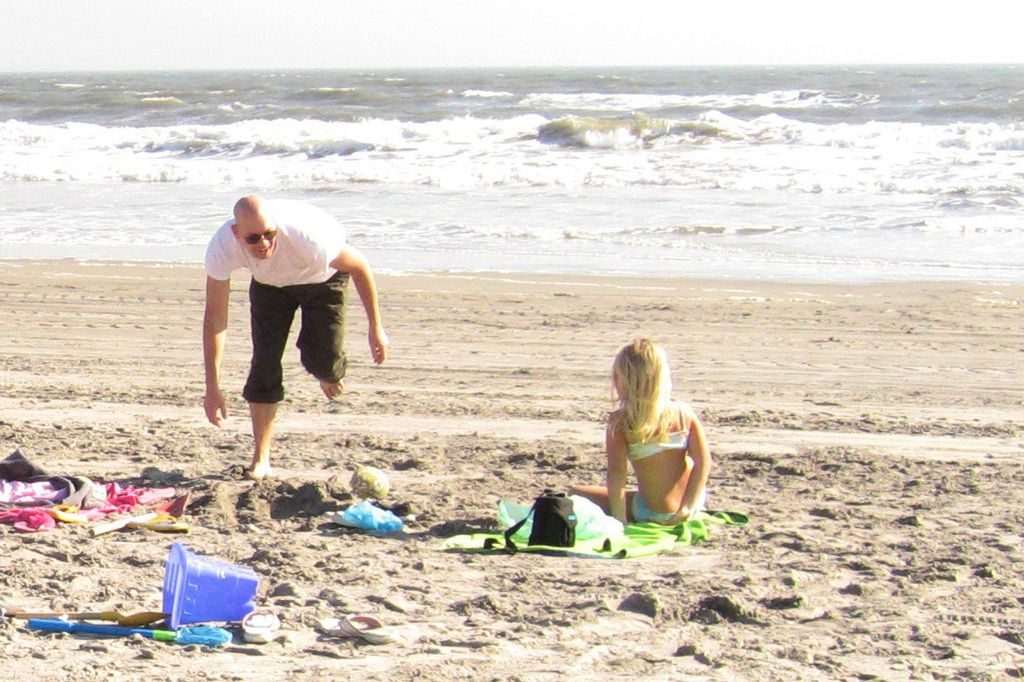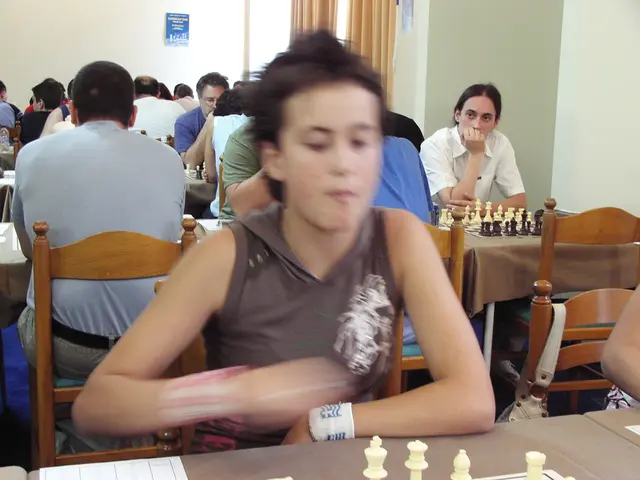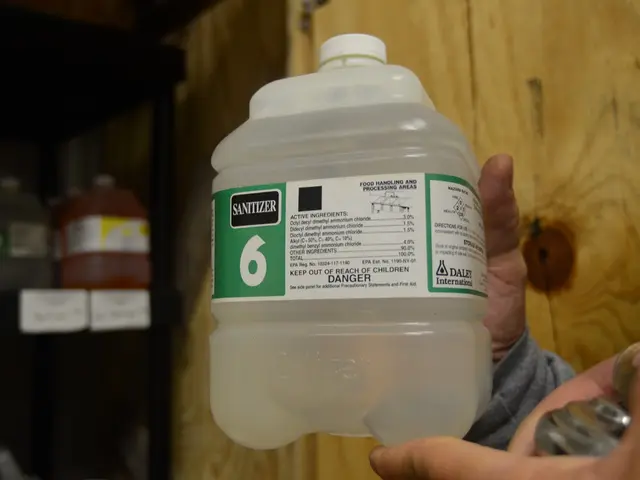Investigating the Evolved and Practical Reasons Behind Human Nails: Examining Role and Importance of Fingernails and Toenails
Why the Heck Do We Have Nails Anyway?
Nails, those little (or big, depending on the toe) hard bits attached to our fingers and toes, are often overlooked, but you wouldn't want to live without them. From serving as a barrier against environmental threats to helping us communicate, nails are an integral part of our daily lives. This piece delves into the evolutionary, biological, and practical purposes of fingernails and toenails, exploring how they've adapted over time to serve functional and protective roles, as well as their significance in social and cultural contexts.
The Lowdown on Nails – From Claws to Hтели Spades
Fingernails and toenails are believed to have evolved from the claws that many mammals, reptiles, and birds still sport today. Although claws are great for climbing, digging, and hunting, nails in primates, including us humans, have taken on different roles as our ancestors adapted to a life spent primarily on the ground.
Bye, Claws! Hello, Nails!
The transformation from claws to nails is all about the evolution of primates. Early primates required nails instead of claws to better grasp branches and manipulate objects. Nails provided a broader surface area, enhancing grip and precision, which was essential for foraging, climbing, and using tools.
Unlike claws, which curb the range of motion, nails allowed for greater flexibility and sensitivity. This evolutionary upgrade enabled primates to engage with their environment in increasingly complex ways, paving the way for advanced behaviors such as tool-use, social grooming, and manual tasks that demanded precision. Moreover, nails helped us peel fruits, scratch surfaces for exploration, and communicate through gestures, ultimately improving survival and social bonding.
Nails in Human Evolution
As we humans evolved, the functional importance of nails grew beyond basic tasks. With the advent of tool-making and intricate manual tasks, nails became indispensable for precision and protection. They guarded the sensitive tips of our fingers and toes while serving as a counterforce to enhance tactile sensation. Plus, nails played a pivotal role in communication and self-expression, allowing early humans to convey social cues through gestures or grooming behaviors. Nails also supported the creation of tools, providing reinforcement for delicate but firm grips during intricate crafting processes.
Nails' multitasking nature contributed to their survival through the ages. From aiding in everyday survival tasks to serving as symbols of status and hygiene in early human societies, nails gradually became more than just a physical feature; they became an integral part of human identity and interaction.
The Anatomy and Biology of Nails
To understand the roles of nails, it's necessary to examine their structure and growth processes. Nails are primarily composed of keratin, a protein that is also found in hair and skin, giving them strength, flexibility, and resilience.
The Moving Parts of Nails
- Nail Plate: The visible part of the nail that protects and supports. Made up of tightly packed keratin cells, this component is hard and durable.
- Nail Bed: The layer of skin beneath the nail plate, rich in blood vessels that nourish the nail and provide its pinkish hue. The nail bed anchors the nail securely and ensures even growth.
- Cuticle: The thin layer of skin at the base of the nail that protects the area where new nail cells are formed and acts as a barrier against environmental threats.
- Lunula: A crescent-shaped, whitish region at the base of the nail, where nail growth starts. This visible section can indicate the health of the nail.
- Matrix: The hidden section of the nail beneath the cuticle where new nail cells are generated and play a key role in nail regeneration. Damage to this area can result in lasting changes to nail growth or structure.
Nail Development
Nails grow continuously throughout your life, with fingernails growing faster than toenails. On average, fingernails grow near 3 millimeters per month, while toenails grow approximately 1 millimeter monthly. Age, health, and nutrition can influence nail growth rates. In warmer months, nails tend to grow faster, while deficiencies in vitamins or zinc can lead to weakened nails or slowed growth.
Hormonal changes, such as during pregnancy, can speed up nail growth, while viruses or trauma can momentarily halt it, leaving behind visible ridges or changes in texture. The intricate dance of internal health and external care reveals the biological complexity of nails.
So, What's the Purpose of Nails Anyway?
While flashy, nails serve a range of purposes that contribute to our overall well-being, functionality, and social interactions. These purposes can be broadly categorized into protection, precision, communication, and aesthetics.
Preserve and Protect
Nails act as protective shields for the sensitive tips of our fingers and toes. The sturdy nail plate prevents injuries that might otherwise jeopardize the fingertips or toes. In addition, the hard surface of nails keeps dirt and bacteria from penetrating the skin beneath, thereby reducing the risk of infection.
Precision and Skillz
Nails amplify the functionality of our hands by acting as a counterforce, improving our ability to manipulate small objects. With tools like writing utensils, kitchen knives, or artistic supplies, it's challenging to imagine life without fingernails. They also heighten tactile feedback, stabilizing the fingertips to allow for greater precision in fine motor tasks. Without nails, simple tasks like picking up coins, brushing hair, or playing instruments would be much more difficult.
Convey and Connect
From simple gestures to elaborate nail art, nails have long served as tools for communication and self-expression. In many cultures, the appearance of nails reflects personal hygiene, health, and style. Artistic embellishments, like painted nails, nail art, and manicures, enable individuals to convey their personality.
Historically, ornate nail decorations have signified social status and cultural identity, spanning across various eras, from ancient Egyptian henna-stained nails to the long, intricate nails of Qing dynasty aristocrats. Furthermore, nails provide subtle nonverbal cues during social interactions. For example, tapping fingernails on a surface may express impatience, while well-manicured nails can create a favorable impression.
Nails as Healthy Indicators
The condition of your nails can shed light on your overall health. Fluctuations in nail color, texture, or growth patterns may hint at underlying health issues. Signs such as:
- Pale Nails: May indicate anemia, malnutrition, or poor circulation.
- Yellow Nails: Often associated with fungal infections or diabetes.
- Brittle Nails: Could indicate nutritional deficiencies, like low levels of biotin or iron, or excessive water and chemical exposure.
- Ridged Nails: May stem from aging, stress, or systemic diseases.
- Clubbed Nails: Rounded, enlarged nails could signify lung or heart disease.
Monitoring your nails can help spot potential health problems early, prompting early intervention. Neglecting nail changes can result in serious health concerns, underscoring the importance of keeping tabs on this overlooked yet informative aspect of ourselves.
The Importance of Taking Care of Those Bad Boys
Maintaining the health of your nails requires proper care. Essential nail care practices include:
- Trimming: Regularly cutting nails to prevent overgrowth and to minimize the risk of ingrown nails.
- Moisturizing: Keeping nails and cuticles hydrated helps prevent dryness and cracking. Natural oils like coconut or almond oil can be particularly effective.
- Avoiding Harsh Chemicals: Steer clear of nail products containing harsh ingredients like acetone or damaging cleaners, which can weaken nails.
- Protecting Nails: Wear gloves during activities that involve water and chemicals to safeguard your nails from harm.
- Balanced Nutrition: Ensure a well-rounded diet rich in vitamins and minerals, such as biotin, zinc, vitamin E, and iron, to foster strong, healthy nails.
Caring for your nails goes beyond aesthetics; it ensures their continued functionality and safeguards against common problems, such as fungal infections or brittle nails. Taking care of your nails is an investment in their resilience, strength, and overall health.
Wrapping It Up
Nails are far more than mere aesthetic features; they are evolutionary adaptations that serve critical functional and protective roles. From safeguarding sensitive fingertips to helping us with precision tasks and signaling our health, nails are essential for our daily lives. By acknowledging the evolutionary and biological significance of nails, we gain a fresh appreciation for this underappreciated appendage. So, the next time you glance at your nails, remember the incredible evolutionary journey and the multiple tasks they perform every day.
- Nails, once thought to have evolved from claws, have taken on different roles in primates, including us humans, as our ancestors adapted to a life primarily on the ground.
- The transformation from claws to nails has brought about greater flexibility, sensitivity, and precision, enabling primates to engage with their environment in complex ways and perform tasks that demanded precision.
- As humans evolved, the functional importance of nails grew beyond basic tasks. Nails protected our fingers and toes while serving as a counterforce to enhance tactile sensation, providing reinforcement for delicate but firm grips during intricate crafting processes.
- Nails have played pivotal roles in communication and self-expression, allowing early humans to convey social cues through gestures or grooming behaviors, and served as symbols of status and hygiene in early human societies.
- Nails can provide insights into overall health. Changes in nail color, texture, or growth patterns may indicate underlying health issues, such as anemia, fungal infections, malnutrition, or systemic diseases.
- Proper nail care is essential for maintaining their health and functionality. Practices like trimming, moisturizing, avoiding harsh chemicals, protecting nails, and consuming a balanced diet rich in vitamins and minerals can help ensure strong, healthy nails and safeguard against common problems, such as fungal infections or brittle nails.
- In addition to their practical purposes, nails hold cultural and aesthetic significance, with artistic embellishments like painted nails, nail art, and manicures allowing individuals to convey their personality and reflect personal hygiene, health, and style. Historically, ornate nail decorations have signified social status and cultural identity.
- Beyond their role in social interactions, nails have been integral to human identity and interaction throughout history. From protection and precision to communication and self-expression, nails have contributed to the overall well-being and functionality of humans in various ways.








